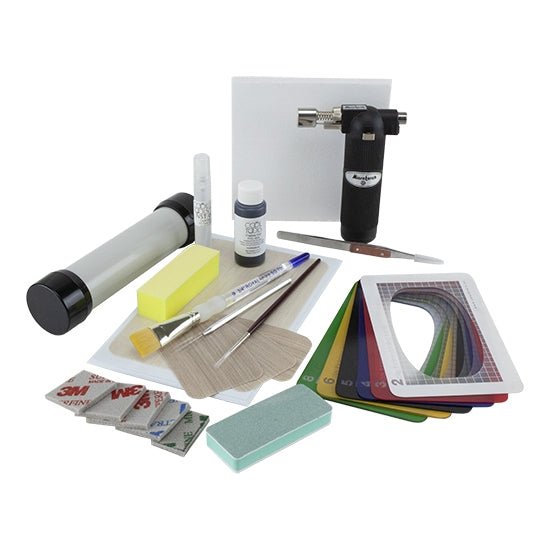What is Silver Clay? Everything you need to know
A selection of jewellery made using Silver Clay combined with traditional silversmithing techniques
Silver Clay is a fascinating material that consists of tiny particles of silver mixed with an organic binder and water. It can be moulded, modelled, rolled and shaped just like traditional clay, but when fired, the binder burns away, the silver particles sinter together and what you’re left with is a solid silver object. It enables jewellers to create versatile shapes and forms in precious metal with minimal equipment quickly and easily within their home studios.
Is it Real Silver?
Yes, silver clay is indeed real silver. The most frequently used silver clay is made of fine silver, which is 99.9% pure silver, although sterling silver (925 or 92.5% silver) and Britannia (950 or 95% silver) also exist.
Is it Toxic?
Silver clay is non-toxic and safe to handle, however, as with all jewellery making, it's good practice to work in a well-ventilated space to avoid inhaling fumes or dust.
How does the clay turn into silver?
Silver “clay” is a misnomer as it contains no actual clay. The clay-like consistency is made by an organic (usually rice-based) binder and water. The binder and water are mixed with tiny particles of silver. The clay is allowed to dry so that the water can evaporate before firing, and when the silver clay is fired in a kiln, with a torch, or on a stove, the binder burns off, and the tiny particles of silver sinter together leaving you with a pure silver form.
painting silver clay paste onto a leaf
What is Sintering?
Sintering is the process whereby a fine, powdered metal is heated to just below its melting point causing the particles to fuse together.
Is it Porous?
In order to get the best out of your silver clay it’s important to know that the structure is different to milled sheet, wire, or even cast pieces, and that silver clay is more porous due to the nature of the sintering process.
This porosity isn’t a problem when the silver clay is fully fired, but an under-fired piece of silver clay will have silver particles that haven’t sintered properly and will be more likely to break.
A twig mould ready to use with silver clay
Why Use Silver Clay Rather Than Casting?
The simple answer is time, ease, and convenience. The real beauty of silver clay is that it allows you to create unique designs quickly and easily from your own home studio (or even your kitchen table!). You don’t need expensive equipment to get started, and it is an excellent way to get into making silver jewellery.
Don’t get me wrong, I’m a big fan of casting too, and it’s great if you want to go into production or make multiples of the same design, it’s just about finding the right processes and techniques to suit you!
Torch firing a silver clay leaf impression
How Do You Fire It?
Firing silver clay can be done using several methods: in a kiln, with a small handheld blowtorch, or some fine silver clays can be fired on a stovetop.
Firing with a blowtorch is a great and inexpensive option for getting started with silver clay. If you’d like to learn more about torch firing please click the button below
Where Can I Buy It?
Most jewellery supply stores will sell Silver Clay. You can find my preferred suppliers in the buttons below
Does It Come in Gold?
Yes, gold clay exists! Gold clay is crafted in the same manner as silver clay but contains gold particles instead. Please click the button below to discover the gold clay
Does it Come in Base Metal?
Yes! You can find copper, brass, bronze, iron and steel clays too. Please click the buttons below to discover these products











